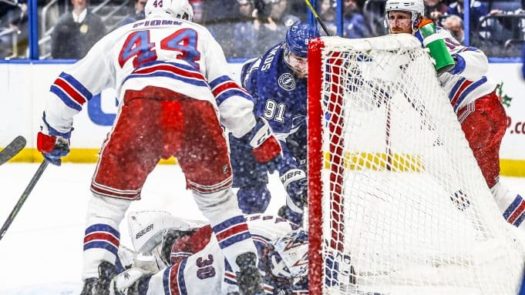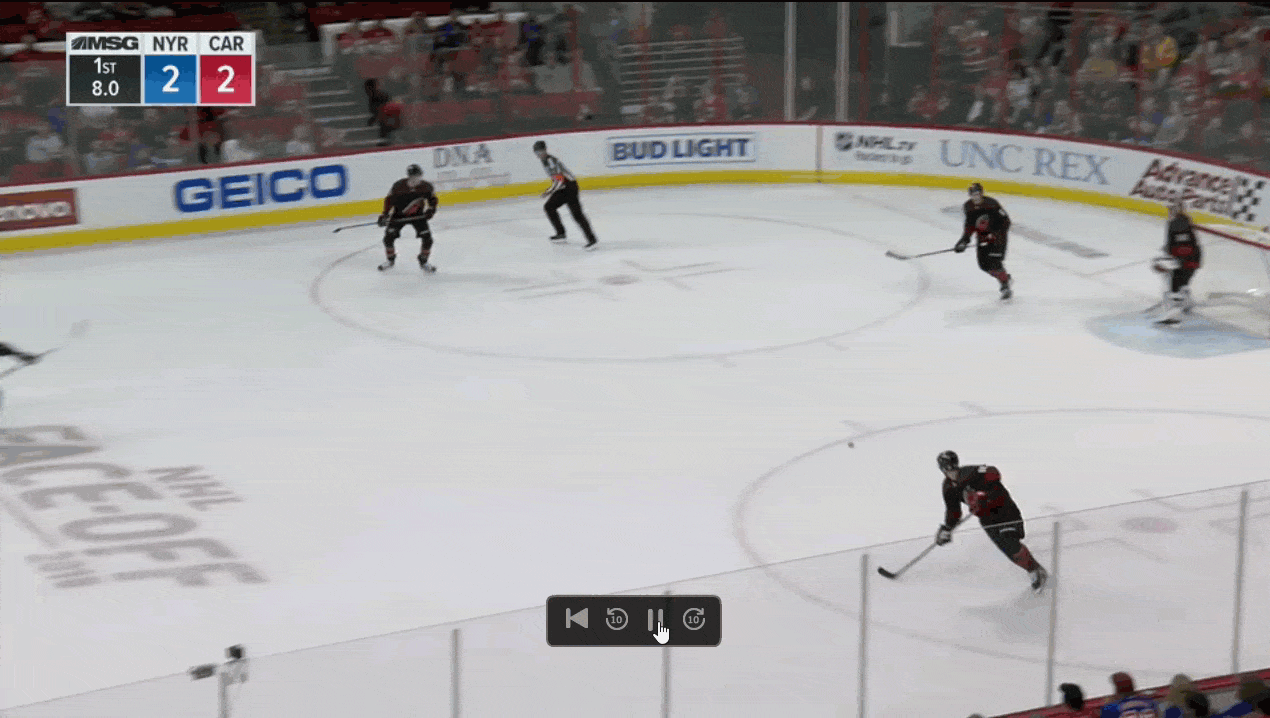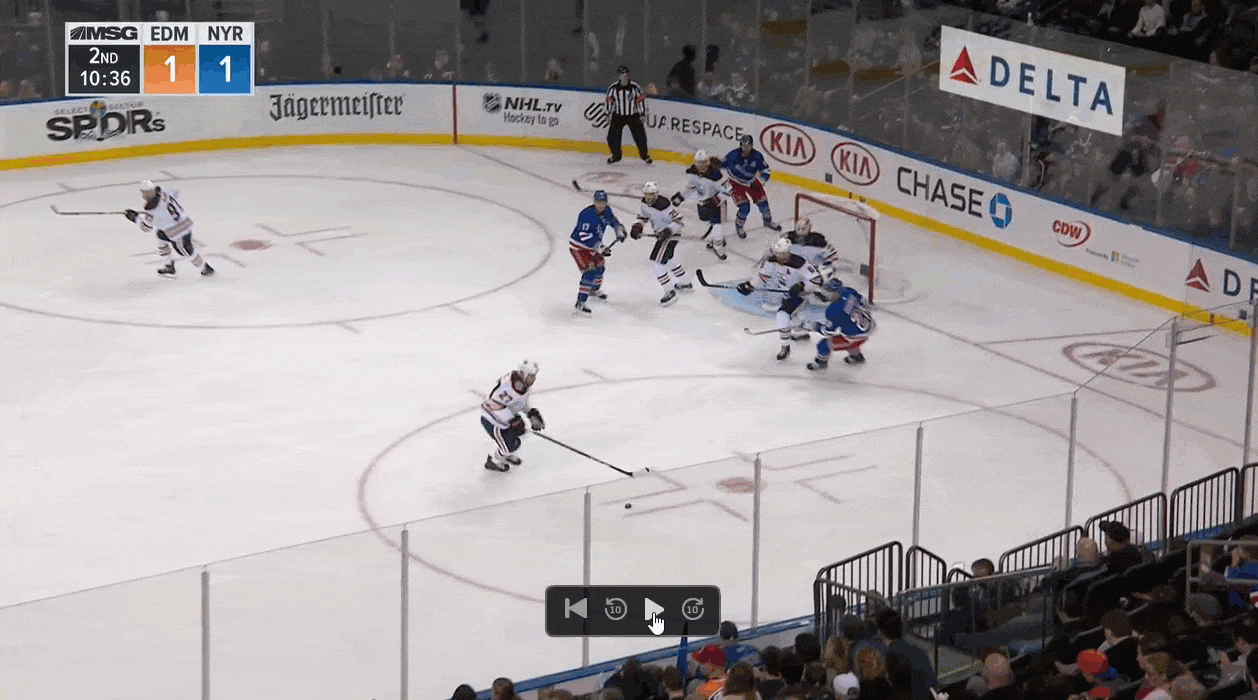
When David Quinn took over head coaching duties, it was expected that the Rangers would shore up their defensive woes and, while they may not win a lot, they were supposed to play better defense. They started the season doing just that, limiting slot line passes and doing an overall better job at protecting the home plate area in front of the net.
Fast forward to 35 games into the season, and we know this isn’t the case anymore. The Rangers are horrible defensively, perhaps even worse than they were under Alain Vigneault. Quinn’s system is specifically designed to cover the middle, so what gives?
Let’s go to a post written by @RickNashtag over at his blog. The post title is specifically about Brady Skjei and how he defends zone entries. Long story short, he’s not that good at it. Or at least that’s what it looks like on the surface.
However Skjei’s issues are an issue across the board for Rangers defensemen. It’s not about the players necessarily being bad, but more about the system Quinn looks to prefer to run for zone entries. Skjei is called out in that post, however it is all Rangers defensemen allowing zone entries.

When it comes to challenging the blue line, Quinn prefers the Rangers to be passive and allow the zone entry. This keeps with Quinn’s preference to keep players to the outside on the rush and away from the home plate area in the center of the zone. This is a stark contrast to AV, who wanted the Rangers to pressure the blue line and force turnovers. From the play above (leveraged from RickNashtag’s post – thank you very much for letting me use this) you can see how far back the defensemen are on rush. That’s not what we are used to seeing.
But therein lies a major part of the problem, which is the Rangers are conceding the zone entry, often with speed. Let’s also add on that the Rangers blue liners are then out of position because they can’t keep up with the speed (blue line mobility is still an issue). As Steve Valliquette noted on a recent broadcast, when a defenseman has both feet in the circles, a slot line pass is more likely.
And there we have the trifecta:
- The Rangers are conceding the blue line in an attempt to keep the puck to the outside, an aspect of “playing it safe.”
- The Rangers, in conceding the blue line, are allowing the opposition to gain the zone with speed. This works against their current defense personnel, who still struggle with foot speed.
- Because the blue liners struggle with foot speed and are allowing the opposition to enter the zone with speed, they are out of position, which opens up slot line passes and dangerous opportunities.

We see another play here (again, courtesy of RickNashtag), but this is a little different because Skjei didn’t fully concede the blue line. However you’ll see he doesn’t challenge the Oilers’ forward on the entry. He allows him to come in, keeps the puck to the outside, and forces a little chip in.
And here’s another issue with the Rangers – on this play, Adam McQuaid doesn’t support Skjei. That should be a turnover, and McQuaid should support the puck once the little chip happens. But he doesn’t. He just continues to play it safe and skates backward. He would probably continue until he hit the boards.
This is all by design. and it’s not a necessarily good design. Teams all over the NHL are exploiting this. The Rangers are giving up the blue line, playing too passively, and appear to be unwilling to go after loose pucks for fear of being out of position. That leads to all the issues we’ve been seeing lately. What’s alarming here is that this is by design. Or at least it appears that way.
Share:
More About:Hockey Tactics
